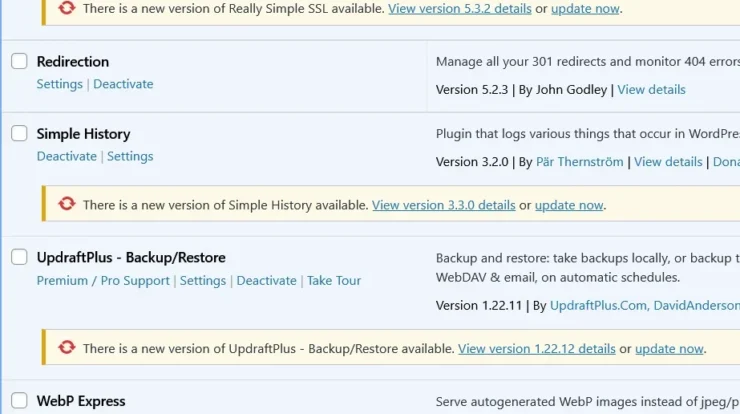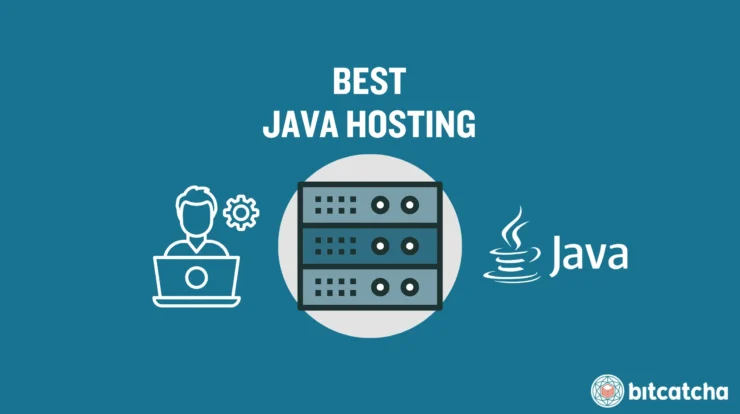
Building a thriving blog demands a strong foundation, particularly if your goal is to attract a substantial and engaged audience.
A significant part of this foundation lies in choosing the right hosting platform, one that can reliably manage escalating traffic demands and prevent frustrating downtime.
This crucial decision affects not only your blog’s performance but also the user experience, directly impacting reader engagement and, ultimately, your blog’s success.
Selecting the best hosting for high traffic blogs is an investment in your online presence and future growth, ensuring consistent and swift loading speeds, reliable uptime, and ample resources to support your content.
Understanding the intricacies of high-performance hosting is essential for any blogger aiming for significant readership and achieving impactful results.
High-traffic blogs, by their very nature, experience consistent waves of visitors, making the best hosting for high traffic blogs more than just a technical concern.
Scalable servers, robust bandwidth, and optimized caching strategies are key factors in achieving and maintaining optimal website performance for a constantly increasing user base.
This article delves into the vital considerations for selecting the most suitable hosting platform to support a high-traffic blog, covering crucial aspects of bandwidth allocation, server response times, and security protocols, ultimately equipping you with the knowledge to choose the best hosting for high traffic blogs.
By exploring the various hosting options available, including shared, VPS, and dedicated server solutions, this comprehensive guide empowers you to make an informed decision that will propel your blog to new heights of success.
Scalability and Reliability: Cornerstones of High-Performance Hosting
Choosing the right hosting provider for a high-traffic blog is paramount for sustained success.
Scalability is a critical factor, ensuring the hosting infrastructure can accommodate increases in visitors without sacrificing performance.
A robust hosting plan must be capable of handling peak traffic demands during popular blog posts, seasonal surges, or unexpected viral moments.
Blogs experiencing high traffic often see their server resources taxed. This requires a hosting solution with readily available resources, such as RAM and CPU, capable of adapting to changing load.
Reliability, reflected in consistent uptime, is equally vital for a high-traffic blog.
Unforeseen downtime, even brief interruptions, can severely impact user experience, alienate readers, and negatively affect search engine rankings.
The best hosting for high traffic blogs provides a solid uptime guarantee, protecting your blog from outages and maintaining the seamless flow of visitor experience.
Implementing redundant server systems and employing advanced monitoring and maintenance protocols are all critical parts of building reliable hosting.
An effective hosting plan will not only address current traffic but also anticipate future growth, ensuring consistent performance, even with increased readership or other impactful events.
Reliable hosting, combined with scalable resources, forms the cornerstone of a high-performing blog that maintains optimal speeds and minimal downtime, essential components of attracting and retaining a large readership.
Ultimately, a scalable and reliable hosting infrastructure is a vital ingredient in creating a high-traffic blog that enjoys consistent readership and maintains strong user engagement.
Understanding these factors is crucial for selecting the optimal hosting solution for any blogger striving for high-performance hosting and extensive readership.
A robust hosting plan allows you to seamlessly integrate other vital aspects of high-traffic blog management, such as effective caching and optimized content delivery.
For example, a well-chosen hosting plan that is designed for high traffic can support content delivery networks (CDNs) for even faster loading times across different locations.
Robust hosting solutions are critical for managing fluctuating traffic patterns that can significantly impact performance. The best hosting for high traffic blogs must handle these challenges gracefully.
Scalability and Reliability: Cornerstones of High-Performance Hosting
Choosing the right hosting provider for a high-traffic blog is paramount for sustained success. Scalability is crucial, ensuring the hosting infrastructure can adapt to increasing visitor numbers without compromising performance.
A robust hosting plan must be capable of handling peak traffic demands during popular blog posts, seasonal surges, or unexpected viral moments. This adaptability is essential for maintaining a positive user experience and preventing frustrating delays or site crashes.
Blogs experiencing high traffic often experience their server resources being taxed. This necessitates a hosting solution with readily available resources, such as RAM and CPU, capable of adjusting to varying load levels. Effective hosting providers anticipate and accommodate these fluctuations.
For a high-traffic blog, reliability is equally vital, specifically reflected in consistent uptime. Unforeseen downtime, even brief interruptions, can significantly impact user experience, potentially alienating readers and negatively affecting search engine rankings.
A reliable hosting platform is essential for maintaining user trust and optimizing online visibility. Reliable uptime is a key factor to consider when selecting the best hosting for high-traffic blogs. Rapid loading times and efficient performance are direct results of consistent, high-quality hosting.
The best hosting for high traffic blogs prioritizes redundancy and robust infrastructure to guarantee stability and mitigate the risks of server failures. This feature often translates into a more seamless experience for visitors and contributes directly to positive user perception.
Optimized server configurations play a crucial role in maximizing performance and ensuring consistent loading speeds during periods of high traffic. A robust hosting provider will employ technologies and strategies to ensure high-quality performance even under intense pressure.
When selecting hosting for a high-traffic blog, consideration of these factors ensures a platform capable of accommodating future growth. A scalable and reliable hosting platform is an investment in the long-term success and sustainability of your blog.
Comprehensive server monitoring and maintenance are key aspects of a robust hosting package, essential for high-traffic blogs. This proactive approach ensures performance and uptime are maintained at optimal levels.
Choosing the best hosting for high-traffic blogs is an investment in sustained online presence. The selection of a robust hosting provider demonstrates a commitment to ensuring consistent service and optimal performance.
Scalability and Performance for High-Traffic Blogs
A crucial aspect of selecting the best hosting for high-traffic blogs is the ability to scale resources effectively to handle increasing traffic loads.
This involves evaluating the hosting provider’s capacity to adjust server resources, such as RAM, CPU, and storage, to accommodate surges in visitors and data demands.
High-traffic blogs often experience significant spikes in traffic, especially during promotional periods, events, or when new content is published.
A hosting solution that cannot adapt quickly to these fluctuations will lead to slow loading times, website downtime, and a frustrating user experience, ultimately impacting your blog’s SEO and reputation.
Scalability is especially important for hosting platforms that power blogs with numerous features, like forums, embedded videos, or interactive content. These features contribute to larger site footprints and necessitate robust hosting.
Robust performance is inextricably linked to scalability. A hosting platform offering optimized resources and sufficient bandwidth guarantees smooth operation under pressure.
High-traffic websites require optimized server configurations and efficient caching mechanisms to ensure quick loading speeds.
Content delivery networks (CDNs) play a vital role in improving performance by distributing content across various servers globally. This reduced latency translates to faster page load times for users worldwide.
Providers offering excellent CDN integration offer a significant advantage in delivering content swiftly to users, improving their overall experience.
Effective caching mechanisms also help improve performance. By storing frequently accessed content on local servers, hosting solutions can reduce server load and enhance speed.
The choice of best hosting for high-traffic blogs needs to consider whether the hosting provider offers these features to manage bandwidth efficiently.
Ultimately, reliable scalability and exceptional performance are vital for maintaining a positive user experience and a thriving high-traffic blog.
The ability of the hosting provider to scale resources without compromising speed or availability directly impacts user satisfaction and long-term blog success.
Choosing a hosting provider with proven scalability and performance capabilities is a critical factor when selecting the best hosting for high-traffic blogs.
With millions of pages being loaded simultaneously, your best hosting solution must efficiently deliver them. Scalability allows a site to handle this influx of requests.
Investing in a hosting plan with sufficient resources can prevent a poor user experience due to slow loading times, errors, or even complete site crashes.
For high-traffic blogs, choosing a hosting provider that prioritizes performance and scalability is not just a preference, but a strategic imperative for sustained growth and success. This approach significantly impacts the bottom line.
Scalability and Performance for High Traffic
A crucial aspect of choosing the best hosting for high-traffic blogs is its ability to handle growing traffic volume without sacrificing performance. This means the hosting provider must offer scalable resources that can expand as your blog’s readership and content increase.
Scalability in hosting directly correlates to the server infrastructure, including the processing power, memory capacity, and bandwidth. For example, a hosting solution that allows for easy upgrades to higher server configurations will adapt more effectively to your expanding demands as your blog’s traffic volume grows.
Performance is intimately linked to scalability. A sluggish website due to server overload leads to a frustrating user experience, impacting engagement and search engine rankings. Fast loading times are paramount for high-traffic blogs; a robust hosting infrastructure ensures minimal latency, improving user satisfaction and retention. Top-tier hosting providers often employ cutting-edge technologies to optimize server response times for a smooth and efficient browsing experience.
Key indicators of good scalability and performance within a hosting package include features like server-side caching, content delivery networks (CDNs), and robust database management systems. These technologies contribute significantly to delivering a seamless user experience.
In terms of high-traffic blogs, the significance of scalability and performance cannot be overstated. A hosting platform lacking in these areas will likely struggle under increased load. This will negatively affect user experience, which could result in lost visitors and reduced search engine ranking. Consequently, a carefully chosen hosting provider that prioritizes both scalability and performance is essential for the continued success of any high-traffic blog.
Selecting a hosting solution with good scalability and performance ensures your blog remains visible, accessible, and highly functional for the growing readership of a high-traffic blog. This is a key factor in the overall user experience and, therefore, crucial for choosing the best hosting for high-traffic blogs.
Choosing the right hosting platform is critical for high-traffic blogs, as it directly impacts performance, reliability, and ultimately, the user experience.
The demands of a high-traffic blog, characterized by frequent page views, numerous comments, and potential spikes in traffic, require a hosting solution that can handle the load without compromise.
This article has explored various crucial factors to consider when selecting the best hosting for high-traffic blogs, including server performance, uptime guarantees, scalability, and support options.
Ultimately, a robust and reliable hosting solution ensures your blog remains accessible, responsive, and free from downtime. This is especially important for maintaining reader engagement and SEO rankings.
In conclusion, investing in the best hosting for high-traffic blogs isn’t just about technical specifications; it’s about securing the future growth and success of your online presence. Careful consideration of factors like server speed, storage capacity, and security features is paramount. By choosing a hosting provider that can handle anticipated traffic surges, you can ensure your blog remains a vital source of information and connection for your audience, effectively maximizing the potential impact of your content.






